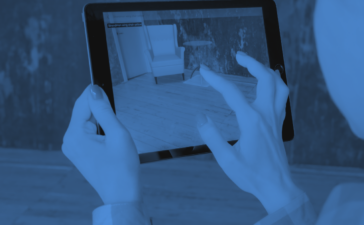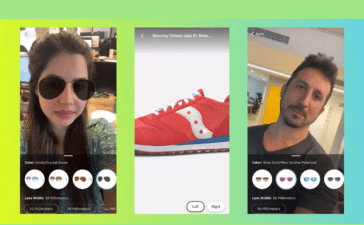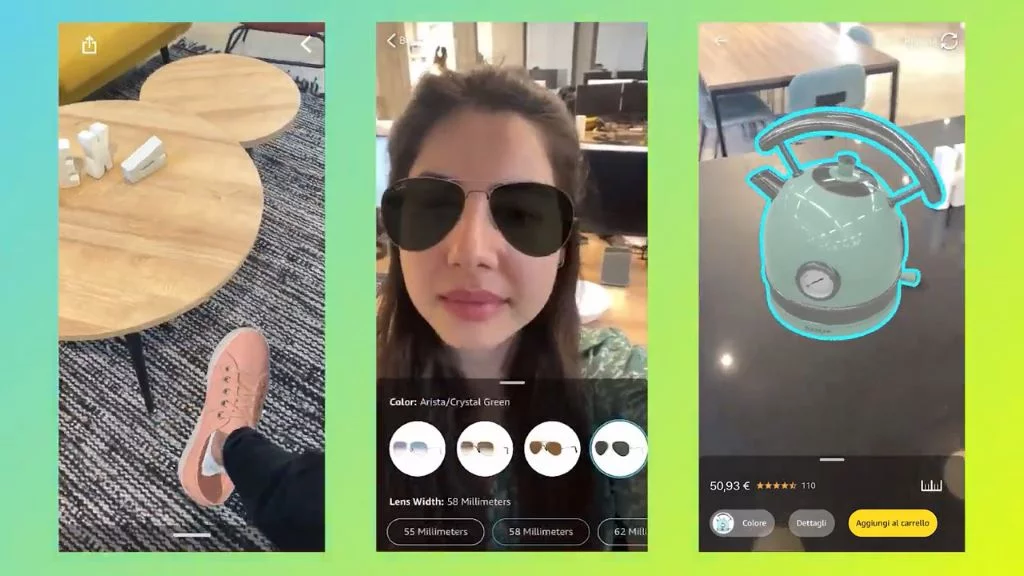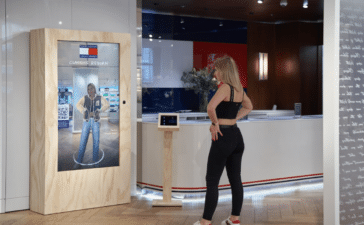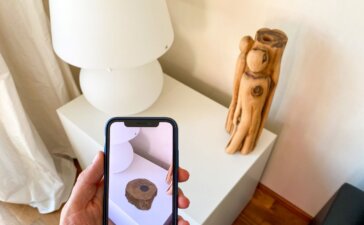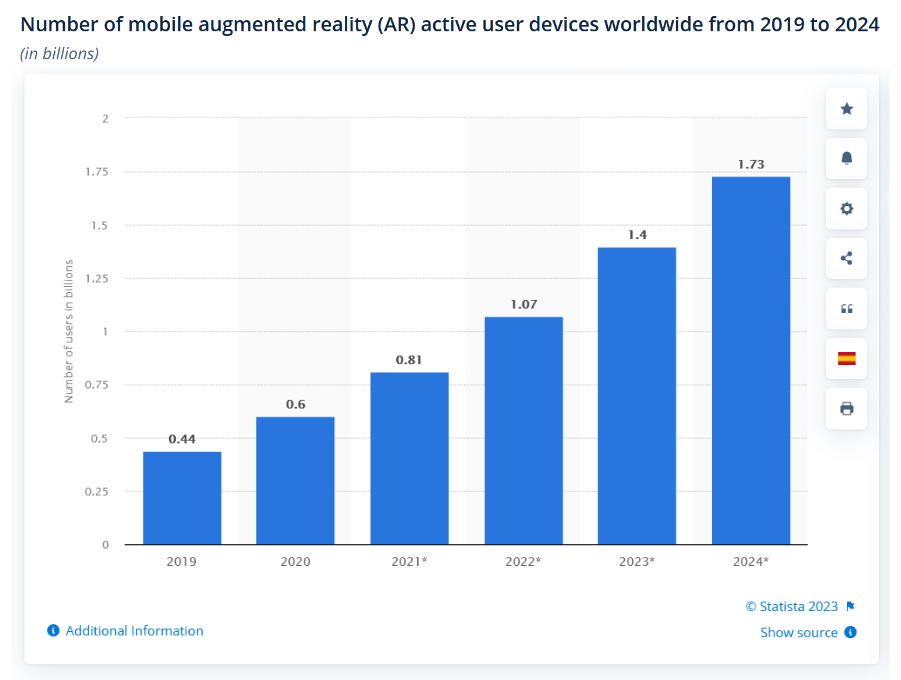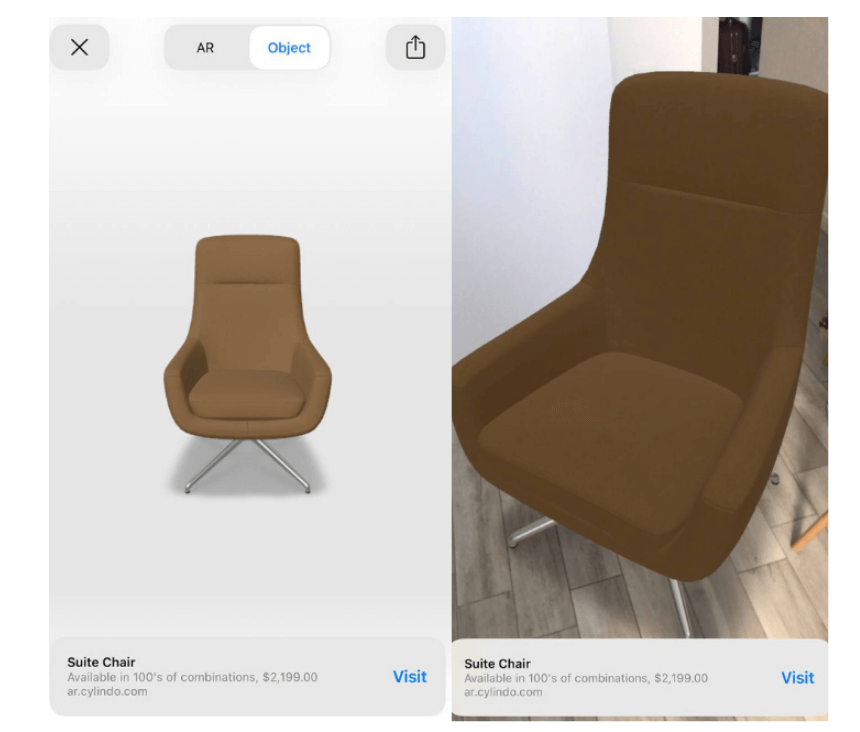Transforming the E-Commerce Industry With AR
Over the years, the e-commerce sector has experienced enormous expansion, allowing customers to buy from the comfort of their homes. However, the option for shoppers to physically engage with things before purchasing is one feature that Internet shopping needs to include. This is where augmented reality enters the picture and completely changes online shopping.
AR provides an immersive and engaging purchasing experience connecting both the online and offline worlds by superimposing virtual features onto the real world. According to Threekit, there will be 1.4 billion AR device users by the end of 2023.
Due to its potential to increase customer engagement and satisfaction, augmented reality has experienced substantial growth in the online retail sector. Online merchants may give customers a more realistic and engaging buying experience using AR technology, empowering them to make more educated purchasing decisions.
Benefits of AR in E-Commerce
For e-commerce, augmented reality has several important advantages, such as improved brand experiences, higher conversion rates, higher user engagement, and improved customer happiness. Let’s dive in to understand the benefits of AR in e-commerce:
1. Increased Customer Engagement
Customers are more engaged with products thanks to augmented reality than they would be with regular online purchasing. Customers may rotate, examine, and perceive objects in 3D, enhancing the purchasing experience’s immersiveness and enjoyment.
2. Improved Customer Satisfaction
By enabling virtual try-ons for clothing and cosmetics, AR lets consumers get around the drawbacks of online purchasing. Customers can buy more confidently by observing how things seem on them or in their surroundings, which lowers the possibility of returns and raises general satisfaction.
3. Increased Conversion Rates
It has been demonstrated that augmented reality increases conversion rates. AR lowers ambiguity and increases trust in purchase decisions by giving buyers a more accurate picture of products. Customers are more likely to convert when they have a clear idea of how things will look or fit into their life.

4. Reduced Product Returns
Product returns are a major worry for brands participating in the e-commerce revolution. By enabling customers to picture things in their homes before purchasing, augmented reality can help to solve this problem. Customers can, for instance, use an AR app to preview how furniture or other design items will look in their locations, which lowers the possibility of expectations being off.
5. Enhanced Brand Experience
Augmented reality allows e-commerce companies to stand out and develop a distinctive brand experience. Brands can make a lasting impact on customers by providing interactive product demonstrations or gamifying the shopping experience, encouraging advocacy and loyalty.
Examples of AR in E-commerce
Numerous e-commerce platforms have successfully incorporated augmented reality technology to give clients engaging and distinctive buying experiences. Here are five examples of augmented reality for e-commerce:
1. IKEA Place
Customers may visually place IKEA furniture in their houses using the augmented reality app IKEA Place. Customers can preview how various furniture items will appear and fit in their living environments using their smartphones or tablets, which enables them to make better-educated purchasing decisions.
2. L’Oréal Paris Makeup Genius
The AR app L’Oréal Paris Makeup Genius is revolutionizing the cosmetics sector. Customers can use the app to experiment with several L’Oréal Paris products virtually. The virtual try-on tool precisely applies cosmetics to the user’s face using facial recognition technology, enabling them to try out several looks before purchasing.
3. Amazon View
The Amazon app includes an augmented reality feature called Amazon AR View. Before purchasing, buyers can use their smartphones or tablets to picture how things would look in their homes. Customers may virtually place furniture, home décor, or appliances in their chosen space, ensuring they make the best option.
4. Walmart’s AR Shopping
With Walmart’s AR Shopping, customers may view products in 3D and get additional information about them, both at home and in stores. This feature gives customers thorough information, such as product details and user reviews, which helps them comprehend and feel more confident about their purchasing choices.

5. Sephora Virtual Artist
Sephora, a multinational retailer of personal care and beauty products, provides the augmented reality tool Sephora Virtual Artist. Customers can virtually try on various cosmetics, including lipsticks, eyeshadows, and other items. Customers can find the ideal products more easily by experimenting with different colors and styles on smartphones or tablets.
Future Trends and Possibilities
1. Potential Advancements in AR Technology
We may anticipate major advancements in AR capabilities as technology develops. The precision and realism of virtual objects in AR experiences will be improved through developments in computer vision, object recognition, and rendering techniques. This might entail greater tracking of actual places, enhanced tracking of virtual things in the real world, and improved interactivity with virtual aspects.
2. Exploring the Intersection of AR and Other Emerging Technologies
Experiences that are even more transformative and immersive could be produced by combining AR with other cutting-edge technologies. By examining user preferences and behavior, AI and machine learning algorithms can provide tailored recommendations and targeted advertising, improving AR experiences.
3. Opportunities for Small and Medium-Sized E-commerce Businesses
Due to the technology’s increased availability and affordability, small and medium-sized e-commerce businesses now have the opportunity to include AR technology in their platforms.
Smaller businesses have two options for utilizing augmented reality: they can use pre-existing AR solutions or collaborate with augmented reality development platforms to create specialized AR experiences targeted to their products and target market.
Conclusion
By offering a more engaging and immersive purchasing experience, augmented reality has the potential to alter the e-commerce sector completely. By implementing AR technology, retailers may improve consumer engagement, contentment, and conversion rates.
AR and other cutting-edge technologies are anticipated to advance and produce fascinating discoveries. Online retailers can now connect the virtual and real worlds thanks to augmented reality, giving customers a more seamless and engaging buying experience.
Guest Post
About the Guest Author(s)

Pratik Rupareliya
Pratik is a techno-commercial leader heading Intuz as Director of Growth with over 14+ years of experience in the field of information technology. His experience and expertise will entice developers and business entrepreneurs with rich content on the latest technology stack.
Transforming the E-Commerce Industry With AR Read More »
